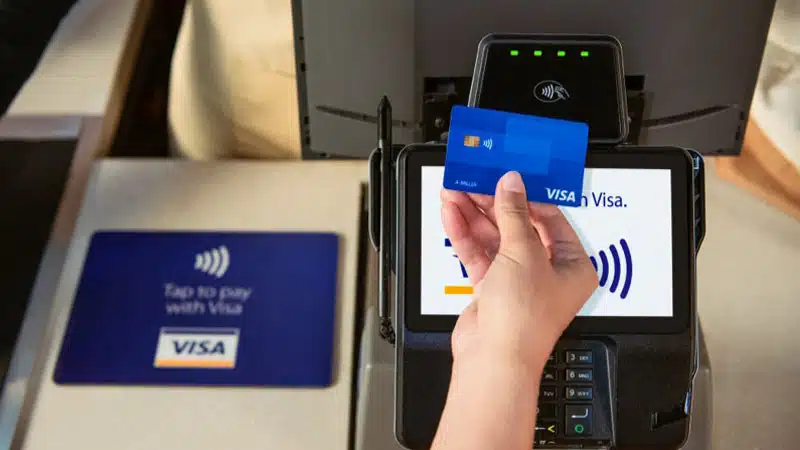Citing “relative stability” across key business metrics, such as cross-border volume, Visa Inc. late Tuesday reported March-quarter increases of 10% year-over-year in both net revenue ($8.8 billion) and net income ($4.7 billion).
Driven by stable consumer spending, dollar volume grew 8%, while total cross-border dollar volume grew 16% and processed transactions grew 11%, the company said.
“Visa’s business performance demonstrates our strategies at work in consumer payments, new flows, and value-added services,” chief executive Ryan McInerney told stock analysts during the card network’s quarterly earnings call.

Looking ahead, McInerney said Visa sees great opportunity to capture a yet larger piece of the global consumer-payments pie, which Visa values at $40 trillion globally, excluding Russia and China. Visa sees $20 trillion of that spending, half of which is in the form of cash- and check-based payments, as ripe for capture.
The key to that ambition, McInerney added, is contactless technology. “Tap to pay is a great example of how we are converting small-ticket cash transactions to Visa credentials,” he said. Other opportunities to grow transaction volume lie in capturing a larger share of transactions that now flow through the automated clearing house and other electronic payments networks, such as rent, education and loan payments, he added.
Converting cards that run primarily on domestic payment networks to Visa-branded cards is another growth opportunity. “We are focused on converting these cards to Visa cards around the world,” McInerney said.
All told, McInerney said there remains a “long runway” ahead for Visa when it comes to growth opportunities in consumer payments.
Tap to Pay volume increased five percentage points during the quarter form a year ago, representing 79% of face-to-face transactions globally. In the United States, Tap to Pay penetration is about 50%.
As for new payment flows, which include business-to-consumer payments, peer-to-peer transfers, and business-to-business payments, these grew 14% for the quarter year-over-year. Visa has said new payment flows represent a $200 trillion market, excluding Russia and China.
Volume on Visa Direct, the network’s real-time payments service, totaled $2.3 billion for the quarter, a 31% increase from a year earlier. During the quarter, McInerney said Visa remained focused on its Visa Direct strategy across several areas of growth, including “new use cases, expansion into new geographies, and enablers.”
To illustrate his point, McInerney cited an expanded agreement with Thunes Ltd., a cross-border payments company, that increased the number of countries in which Visa Direct push-to-wallet payments can be completed to 108 from 78. McInerney also noted that J.P. Morgan Payments will integrate Visa Direct into its acquiring operations to enable faster push payments for business clients.
In value-added services, Visa now plans to begin rolling out its open-banking service in the United States through Tink, its Stockholm-based open-banking platform. The U.S. is still in the nascent stages of developing open banking, offering Visa and other networks an opportunity to leverage knowledge and experience gained in open banking in Europe, McInerney says.
To that end, Visa has struck deals with Capital One Financial Corp., Fiserv Inc., and Jack Henery & Associates Inc., as well as fintechs Dwolla Inc. and MaxRewards to enable their customers to share their financial data with Tink.
McInerney also highlighted the introduction of Visa Protect, Visa’s first fraud-prevention solution for account-to-account payments. An AI-based application, Visa Protect provides a real-time risk score for A2A transactions. Pilots for the app have been so successful, Visa plans to begin rolling out the technology, McInerney added.
Another addition in value-added services is Visa Deep Authorization, a transaction risk-scoring solution for e-commerce transactions in the U.S. market.
When asked about the impact of the interchange settlement reached with merchants last month, McInerney said the deal brings “clarity and stability” to the market. At the same time, he said, the agreement allows all parties in the decades-long dispute to move forward.





